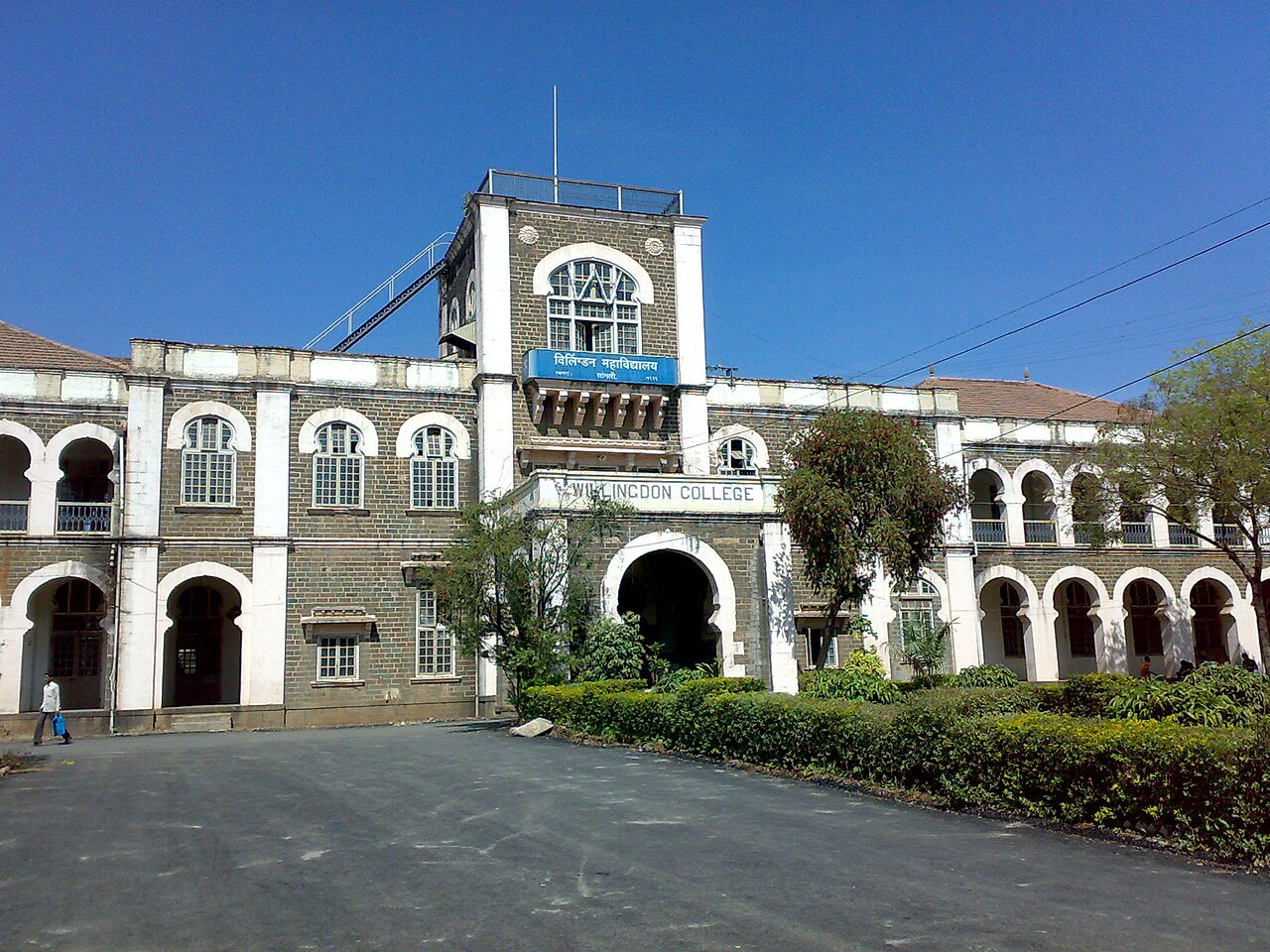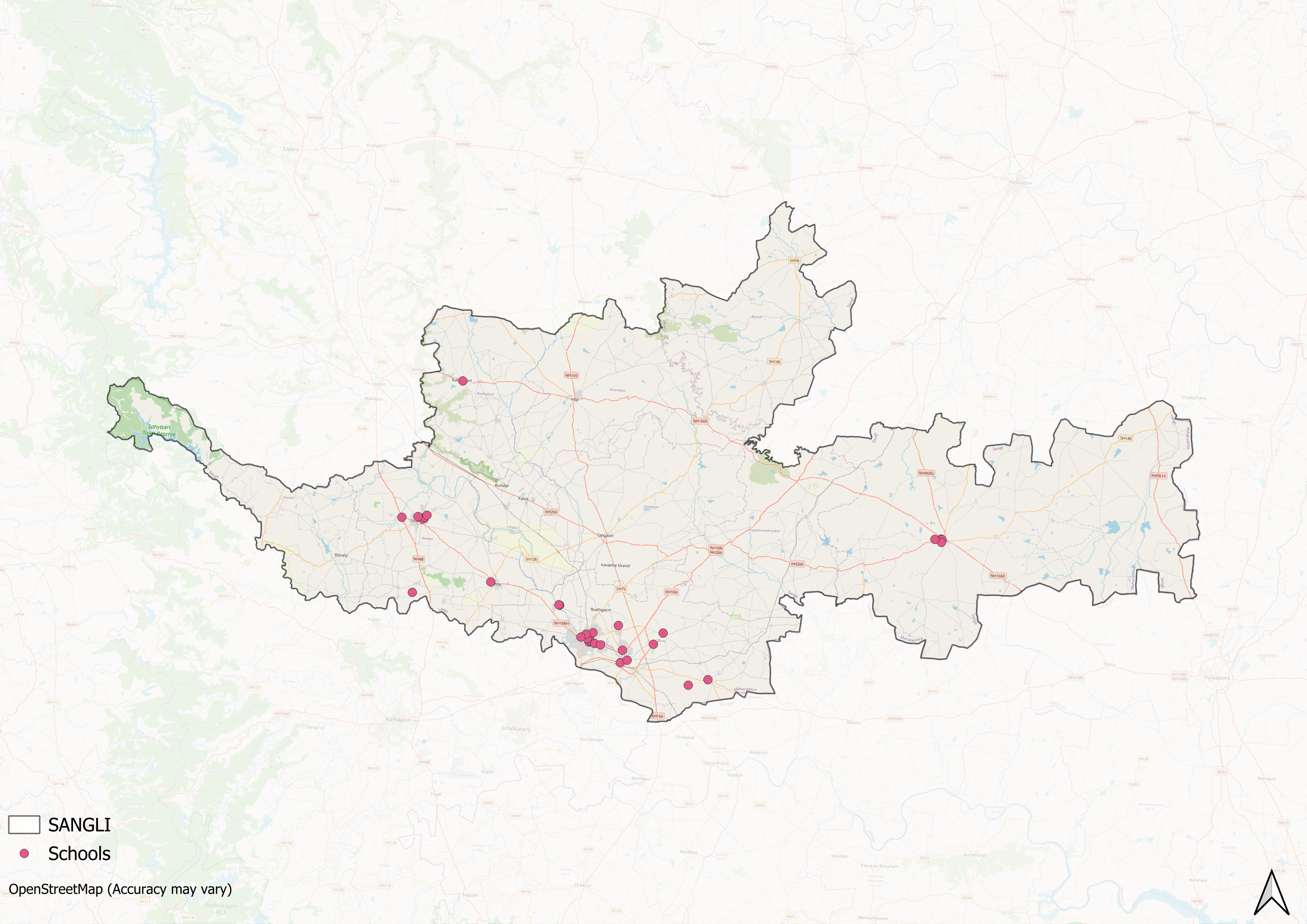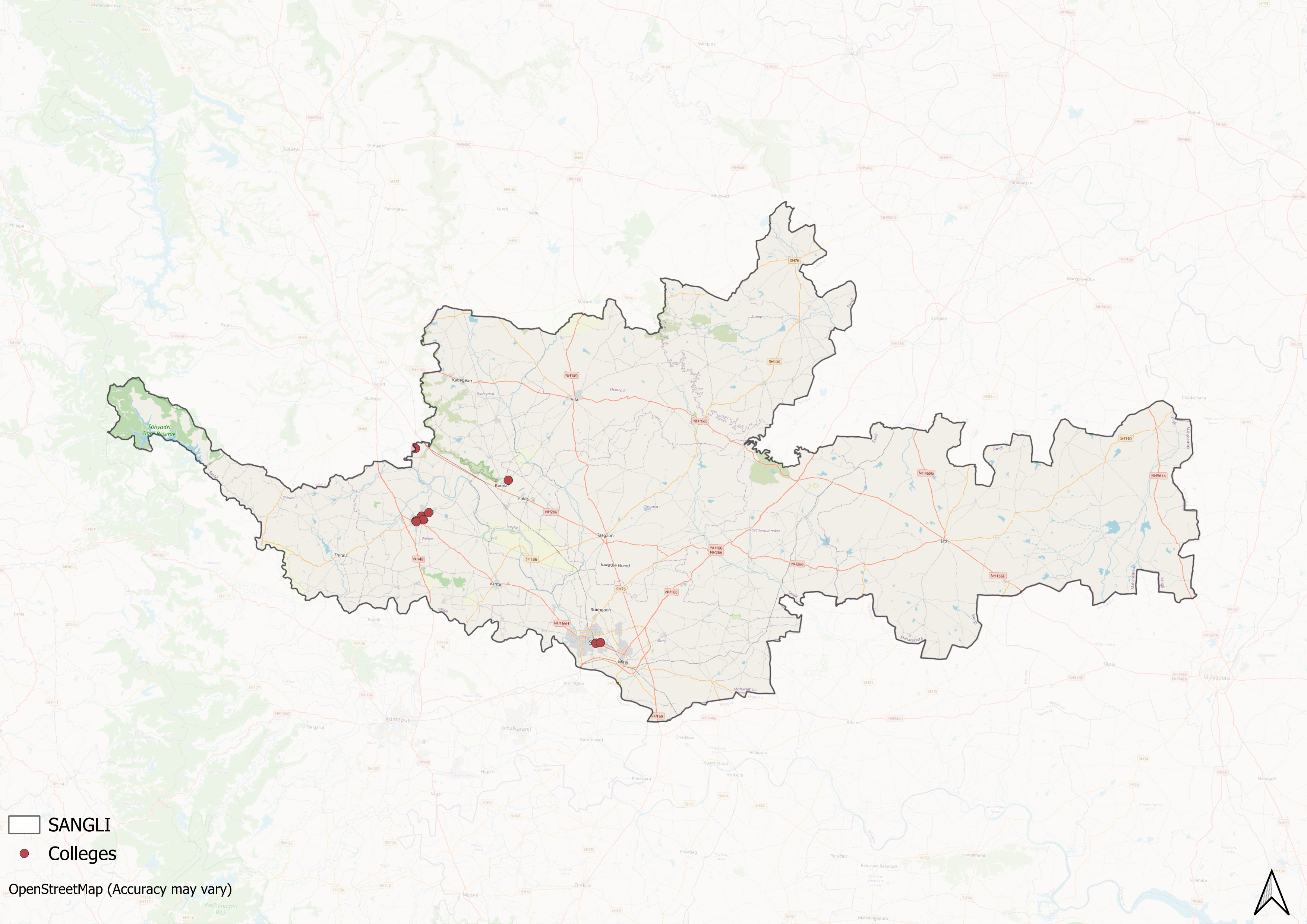Contents
- Early History
- Colonial History
- Local Figures & Organizations
- Deccan Education Society
- Women’s Education Society
- Post-Independence Era and Contemporary Educational Infrastructure
- Primary & Secondary Education
- Institutions of Higher Learning
- Walchand College of Engineering
- Dr Patangarao Kadam Mahavidyalaya College
- Prominent Figures & Organizations
- Latthe Education Society
- NGOs and Community-Based Education Efforts
- Bhaktaraj Garje and the Paani Foundation
- Graphs
- Enrollment and Dropout Rate
- A. Student Enrollment Numbers
- B. Student Enrollment (Class-Wise)
- C. Student Enrollment (Gender-Wise)
- D. Student Enrollment (By School Management Type)
- E. Drop Out Rate (By Schooling Level)
- F. Drop Out Rate (By Gender)
- Schools
- A. No. of Schools
- B. No. of Schools (Filtered by Gender Mix)
- C. No. of Schools (By School Management Type)
- Teachers
- A. No. of Teachers
- B. No. of Teachers (By School Management Type)
- C. No. of Teachers (Male vs Female)
- D. Education Level of Teachers
- Sources
SANGLI
Education
Last updated on 28 July 2025. Help us improve the information on this page by clicking on suggest edits or writing to us.
The educational framework of Sangli aligns with the broader structure of the Indian education system, encompassing pre-primary, primary, secondary, and higher education. By the 19th century, the introduction of the Western education framework in the district changed its educational landscape. British administrators and missionaries became actively involved in shaping education in the region.
Still, even as colonial influences grew, the early 20th century saw a wave of local initiatives; its existence indicated an increasing public awareness regarding the importance of education. Local communities took charge of education, a movement that carried into the post-independence era, shaping the district’s educational landscape in lasting ways.
Early History
Little is known about the early history of education in Sangli; however, this does not imply that formal or any system of education was completely absent in the district. It is possible that, like many places across Maharashtra, some systems of education did exist in the district in earlier times.
Colonial History
The introduction of Western education in Sangli district began in the 19th century. In 1884, the State High School, regarded as the oldest secondary school in the region, was established. In the early 20th century, efforts to expand access to education were initiated under the administration of Sangli State.
Interestingly, according to the Sangli district Gazetteer (1969), a scheme for free and, under certain conditions, compulsory education was introduced in the early 1920s during the tenure of Captain Burke. The policy was gradually extended to villages across the state, and by 1929–30, it is noted that compulsory education had been implemented in 71 school areas, with 166 government primary schools in operation. In 1942, teacher training was introduced with the establishment of a Training College. The mid-1940s saw the founding of many new institutions.
Local Figures & Organizations
While entities from the West played a significant role in shaping the educational landscape of Ahilyanagar, local figures and organisations also emerged as key contributors. Many of them established institutions that continue to shape education in the district today, alongside community-led organisations that have played a lasting role in its development.
Deccan Education Society
The Deccan Education Society (DES), established in Pune in 1884, was one of the leading educational movements of the late 19th and early 20th centuries in western India. Its founders, including prominent reformers like Vishnushastri Chiplunkar, Gopal Ganesh Agarkar, and Bal Gangadhar Tilak, envisioned an Indian-led education system rooted in liberal values and national self-awareness. Over time, its activities extended beyond Pune into various parts of Maharashtra, including the Southern Maratha and North Karnataka regions.
One of the Society’s most significant contributions to Sangli district was the founding of Willingdon College. Responding to the growing demand for higher education in the region, DES established the college with support from both the British administration and the princely states of the Southern Maratha Country. It was formally founded in 1920, though teaching began in 1919 at a temporary site, now occupied by Rani Saraswati Kanya Shala.

The college initially offered instruction in the Arts stream and was affiliated with the University of Bombay. Financial assistance from the rulers of the Southern Maratha princely states facilitated its establishment. The college was named in recognition of Lord Willingdon, then Governor of Bombay, whose support helped secure official sanction.
Women’s Education Society
The Women’s Education Society was founded by local residents of Sangli district and was active in establishing institutions for female education during the late colonial period. It was responsible for the establishment of a Girls’ High School in the 1940s and contributed to broader efforts aimed at expanding educational opportunities for women in the region.
Post-Independence Era and Contemporary Educational Infrastructure
Following India's independence, the education system in Sangli underwent major transformations. The introduction of structured education levels, pre-primary, primary, secondary, and higher education and the implementation of National Education Policies heavily shaped the educational landscape of the district. Over the years, the education sector has developed with contributions from both government-funded institutions and private organisations. Additionally, Educational boards were also introduced, each offering distinct curricula and standards, providing students with more choices.
Primary & Secondary Education
During the colonial period, both public and private efforts in education primarily focused on primary and secondary schooling, as indicated by data from district gazetteers across Maharashtra. Higher education remained underdeveloped in most districts, including Sangli, with gradual improvements over time. While basic infrastructure for primary and secondary education existed, its expansion was closely tied to increasing enrollment and greater involvement of local figures.

Today, this expansion is evident in the widespread presence of schools across various wards of Sangli, with available data reflecting the steady growth of educational institutions in both urban and rural parts of the district.
Institutions of Higher Learning
Perhaps one of the most notable changes in Sangli’s educational landscape is tied to the establishment of higher education institutions. While primary and secondary schooling expanded steadily, opportunities for advanced education remained limited for much of the district’s history. Over time, local leaders and organisations played a crucial role in addressing this gap, leading to the creation of several colleges. As a result, many institutions in the district today are privately managed, semi-private, or autonomous.
Walchand College of Engineering
Walchand College of Engineering is an engineering institution located between Sangli City and Miraj. It was established in 1947 under the name New Engineering College, with an initial focus on civil engineering education. The college was later renamed in 1955 to commemorate industrialist Walchand Hirachand, and came under the joint administration of the Government of Maharashtra and the Seth Walchand Hirachand Memorial Trust.
The foundation of the college coincided with the region's early industrial development, particularly following the establishment of Kirloskar Brothers Ltd. at Kirloskarwadi in 1910. Over time, the institution expanded its academic offerings to include multiple engineering disciplines and became one of the prominent engineering colleges in the region.
Dr Patangarao Kadam Mahavidyalaya College
Dr. Patangrao Kadam Mahavidyalaya was established on 16 September 1985 in Sangli district as part of Bharati Vidyapeeth, an educational trust founded by Dr. Patangrao Kadam in 1964. Dr. Kadam, originally from the drought-prone village of Sonsal (in Sangli district), aimed to expand access to education in rural areas. The college offers undergraduate programs in Arts, Science, Commerce, and vocational studies. It has received grants from the University Grants Commission (UGC) and was awarded an “A” grade accreditation by the National Assessment and Accreditation Council (NAAC) in 2013.

In addition to these institutions, a number of centres for higher education operate throughout the district, which offer programmes across various disciplines. While the landscape of higher education has broadened significantly since independence, disparities in access, particularly along geographic lines, remain evident.
Prominent Figures & Organizations
Latthe Education Society
The Latthe Education Society (LES) was established in 1951 to commemorate Annasaheb Latthe, a noted social reformer and educationist known for his advocacy of women's education and efforts to uplift marginalised communities. Since its founding, the Society has expanded its reach across Western Maharashtra and North Karnataka, offering a wide array of educational programs from kindergarten to postgraduate and research levels.
LES operates a range of institutions, including colleges for Arts, Science, and Commerce; a Law College; a Women's College; a Polytechnic College; a College of Education; a Medical College; and various vocational training centres. Among its notable institutions is the Smt. Kasturbai Walchand College of Arts & Science, founded in 1960. Permanently affiliated with Shivaji University, Kolhapur, the college plays a key role in improving access to higher education in the region.
NGOs and Community-Based Education Efforts
Education has been a key driver of social reform, particularly in addressing inequality and expanding access to learning. While formal institutions provide structured education, many communities continue to face barriers due to poverty, social stigma, or lack of resources. To address these challenges, various organisations in Sangli have focused on community-based education initiatives, with each working to tackle specific social challenges present in the district.
Bhaktaraj Garje and the Paani Foundation
In 2010, Bhaktaraj Garje, a primary school teacher originally from Ahilyanagar, took charge of a school in Kulalwadi village, Sangli district. At the time, the school faced infrastructural challenges and low student retention, with many children missing extended periods of the academic year due to seasonal migration and water scarcity.

Identifying the underlying socio-economic issues affecting education, Garje initiated several community-based interventions. He began with environmental education and tree plantation activities and later expanded efforts in collaboration with the Paani Foundation. Through the Foundation’s water conservation programme, the community built trenches and check dams to address local water shortages.
Nitnaware (2021) reports that, over time, the village conserved an estimated 23 crore litres of water and planted thousands of trees. Improved water availability reduced migration, which in turn led to increased school attendance, from 97 to 245 students. New classrooms and school facilities were added, contributing to a more stable educational environment.
Garje’s work in Kulalwadi demonstrates a holistic model of education that connects classroom learning with environmental and community development. His approach, in many ways, highlights how addressing socio-economic barriers can significantly improve educational outcomes in rural areas.
Graphs
Enrollment and Dropout Rate
Schools
Teachers
Sources
Bharati Vidyapeeth. “History of the Institution”. https://bvdpkmsangli.edu.in/index.php/about-…
Himanshu Nitnaware.2021. “How a Maharashtra Village Saved Crores of Litres of Water.” The Better India.https://thebetterindia.com/259517/saving-cro…
Latthe Education Society. “About Latthe Education Society, Sangli”. https://www.kwcsangli.in/page/130/about-latt…
Maharashtra State Gazetteers. 1969. Sangli District.Directorate of Government Printing, Stationary & Publications, Government of Maharashtra, Mumbai.
Willingdon College. “History of Willingdon College”. Accessed March 17, 2025.https://willingdoncollege.ac.in/about_us/his…
Last updated on 28 July 2025. Help us improve the information on this page by clicking on suggest edits or writing to us.